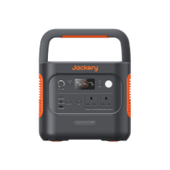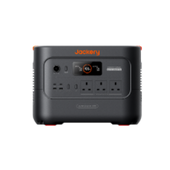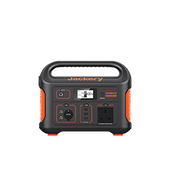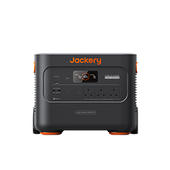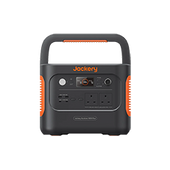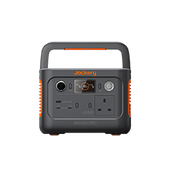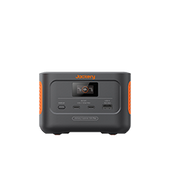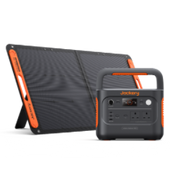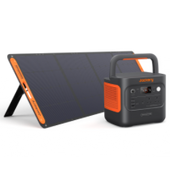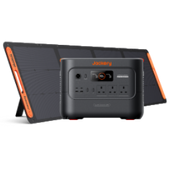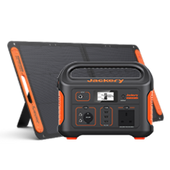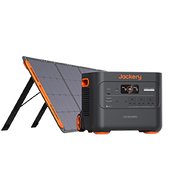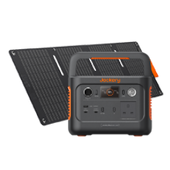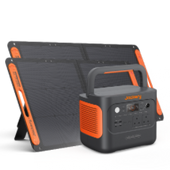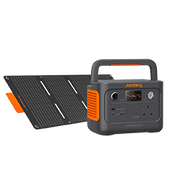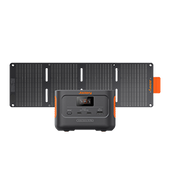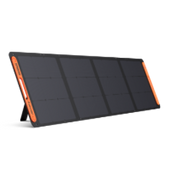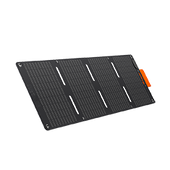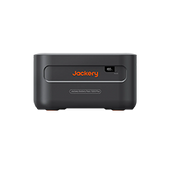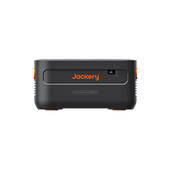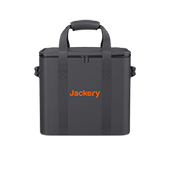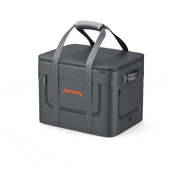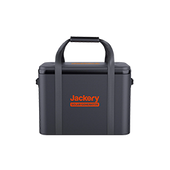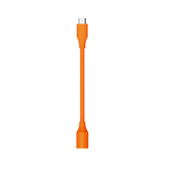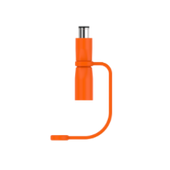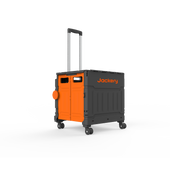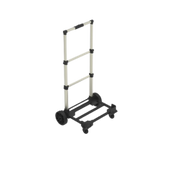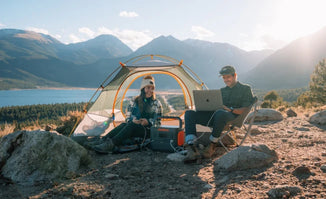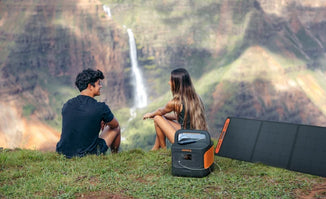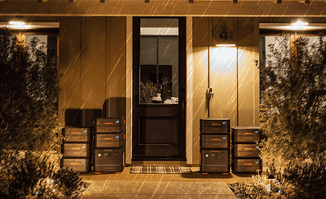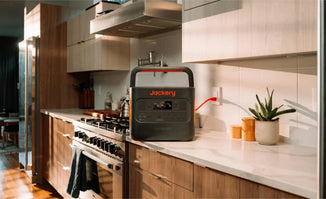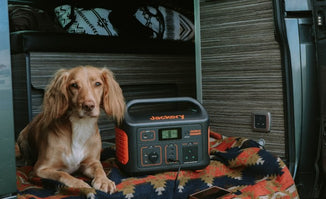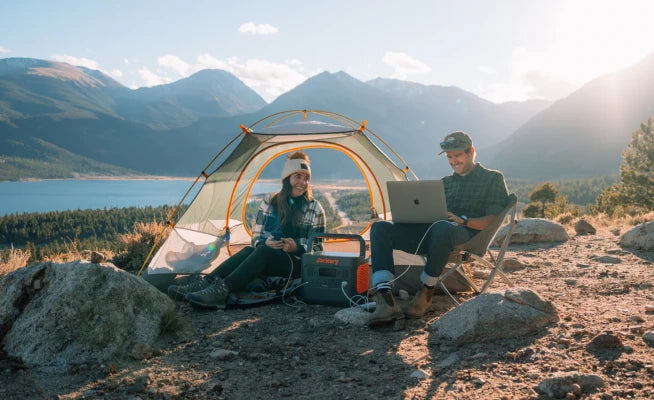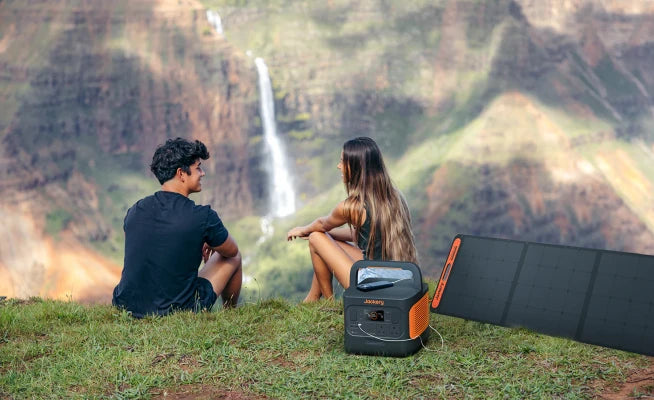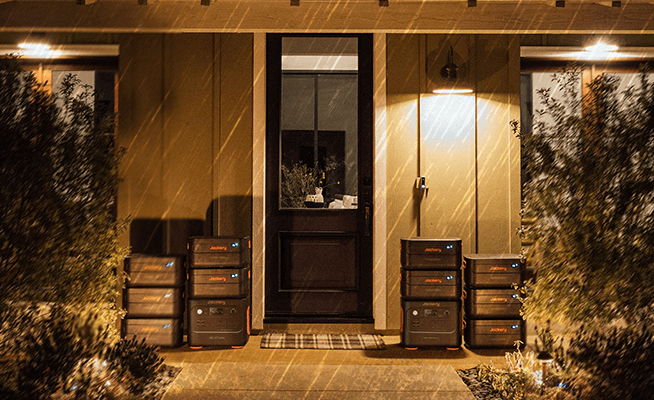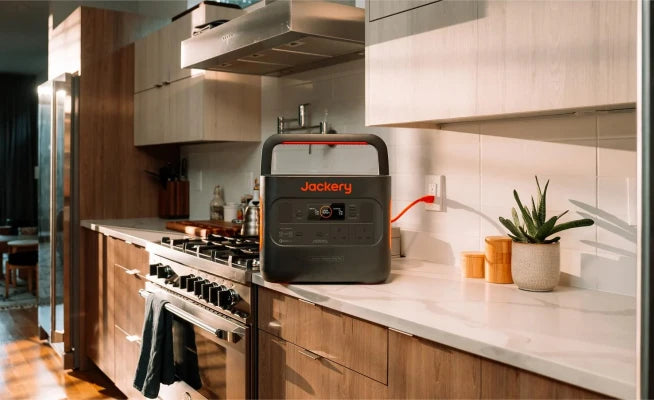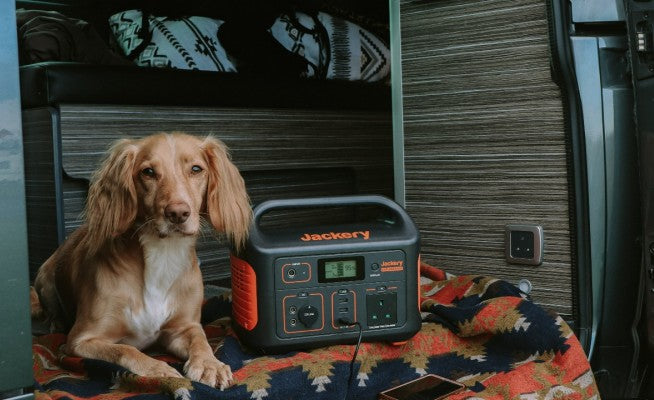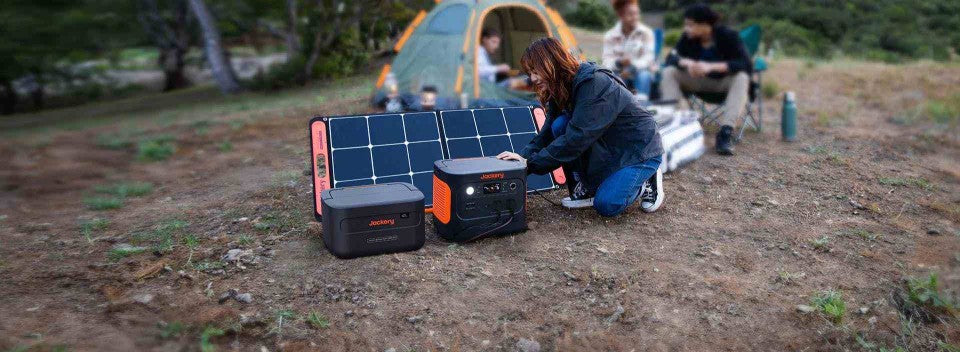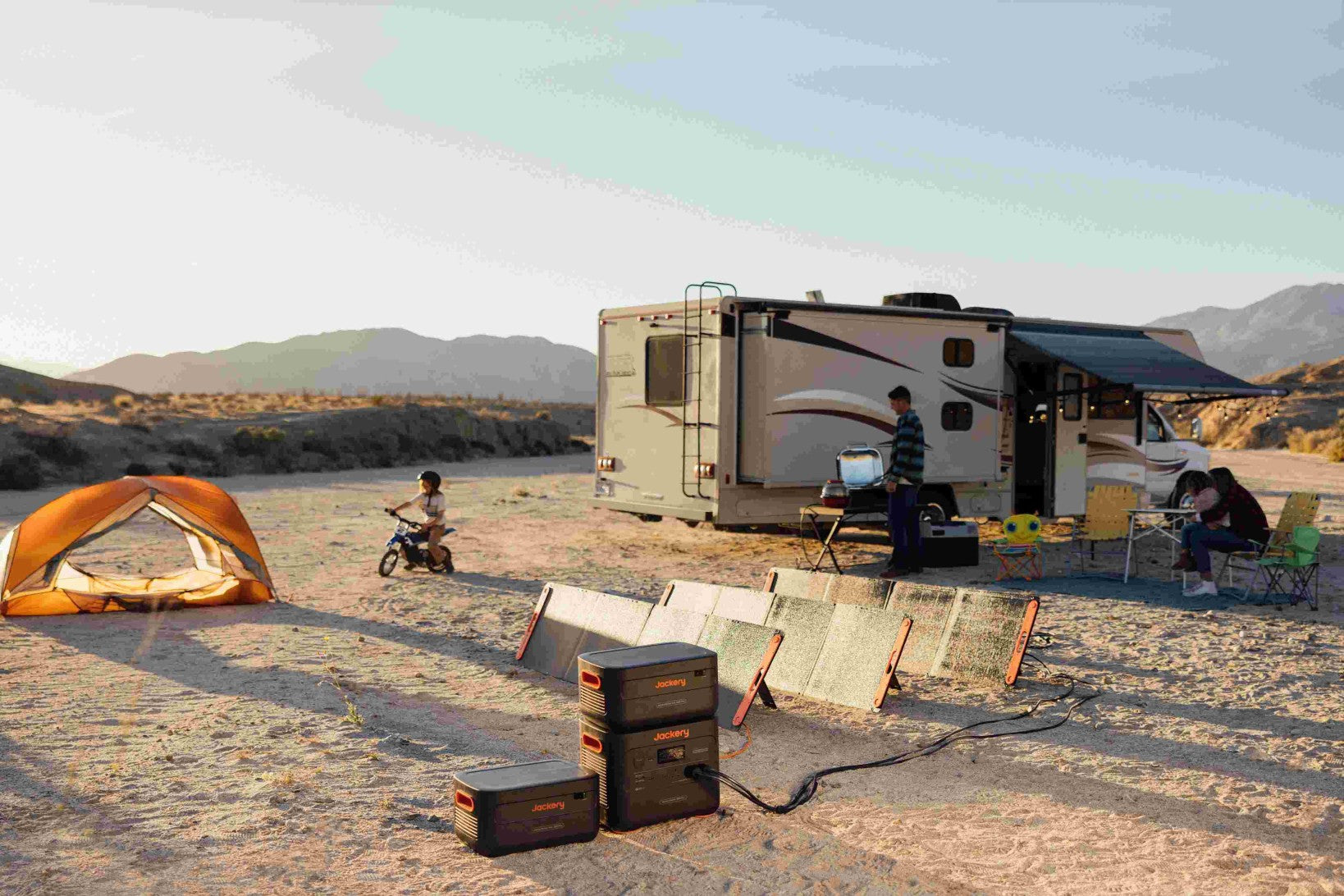Choosing the correct motorcycle gear is essential for every rider, but it is especially important in the UK, where rainy roads, cold mornings and urban congestion are prevalent. This guide covers all of the British motorcycle gear you'll need, from licensed helmets and weatherproof jackets to heated grips and reflective accessories.
Whether you're commuting in London, exploring the Highlands, or just getting started as a rider, good gear keeps you safe, comfortable, and road-ready all year. Thanks to local knowledge and expert-backed tips, this is your go-to reference for getting ready safely and smartly for any British riding condition.
You will also need portable power to charge your electric equipment on the go, and we recommend the Jackery Portable Power Station to charge your electronics and devices outdoors without worrying about losing electricity during your motorcycle trips in the UK.
|
Key Takeaways: |
|
- Motorcycle gear is critical for rider safety, especially on unpredictable and often wet UK roads. - CE-certified helmets, gloves, jackets, trousers, and boots should form the foundation of your British motorcycle gear. - Choosing the right gear involves balancing safety, weather resistance, comfort, and your personal riding style. - Motorcycle boots should be oil-resistant, waterproof, and reinforced for crash protection and all-day wear. - We recommend the Jackery Explorer 300 Plus portable power station, which is compact and has sufficient power capacity for charging electronics and devices outdoors. |
Why Is Motorcycle Gear Important in Britain?
Riding a motorbike in Britain is more than simply a simple and fuel-efficient mode of transportation; it's a way of life that provides independence, thrill, and a strong connection to the open road. But it also carries significant risks.

For British riders, gear serves three critical functions: it improves safety, meets regulatory requirements, and aids in navigating the ever-changing British weather. Whether you're a new rider getting ready for your CBT or a daily commuter navigating tiny roads and highways, excellent motorcycle gear should always be a part of your ride. It's not enough to look the part; you also need to ride smartly.
Safety Above All
The primary function of motorcycle gear is protection. Helmets, jackets, gloves, pants, and boots all contribute to reducing the severity of injuries in the event of an accident. Protective gear made of CE-certified armour and abrasion-resistant materials protects the rider's body from impact and contact with the road.
Legal Compliance and Insurance Considerations
The legal requirement for motorbike gear in the United Kingdom is clear: you must wear an approved helmet while riding on public highways. But legal compliance goes beyond simply avoiding fines. When analysing claims, insurance firms may consider the gear you were wearing at the time of the accident.
Adaptability to British Weather
The environment is one of the most significant problems for riders in the United Kingdom. Rain, wind, fog, and drastically fluctuating temperatures are common, and riding without suitable gear can soon become uncomfortable or even dangerous.
Visibility and Confidence
Visibility is also an important aspect of motorcycle gear, especially in Britain's gloomy skies and dull winter evenings. High-visibility fabrics, reflective strips, and contrasting colour schemes boost your visibility on the road, making it simpler for other drivers to see you in traffic or low-light conditions.
British Motorcycle Gear Guide
The appropriate gear not only provides real protection but also increases rider confidence. Feeling confident in your equipment allows you to ride more assertively and respond calmly to possible threats. Over time, this increased confidence helps to improve overall road safety and riding satisfaction. The following are the British motorcycle gear that you will need.

A. Motorcycle Jackets and Suits
When it comes to selecting the best British motorcycle clothing, jackets and suits are among the most important components of your riding setup. They are the foundation of your safety system, protecting you from impact injuries, abrasions, wind chill, and, most crucially for UK riders, unexpected weather.
Motorcycle jackets and suits are purpose-built instead of daily coats or fashion clothing. They are intended to protect your essential organs in the event of a collision, regulate body temperature, and keep you dry and visible on the road.
Textile vs. Leather: What Works Best for Britain?
Textile jackets and suits are often the most practical option for British riders, particularly those who ride all year. They provide superior waterproofing, more thermal alternatives, and require less care than leather. Many textile kits have removable thermal lining and ventilation zips, making them appropriate for both winter and summer use. Look for laminated waterproofing (such as Gore-Tex or equivalent) to keep you dry even in a rainstorm.
Leather gear, on the other hand, is popular with sport riders and those who value abrasion resistance. While leather provides superior protection and a snug fit suited for high-speed stability, it is less breathable, not naturally waterproof, and difficult to adjust to wet weather unless combined with rain layers. Leather is better suited for dry, performance-oriented riding, such as weekend rides through the Yorkshire Dales or track days.
Touring, Commuting, or Sport Riding?
Your jacket or suit should match how and where you ride. British highways provide a variety of conditions, from busy city centres to open rural B-roads, and your gear should reflect this diversity.
Touring riders need long-distance comfort, so look for gear with multiple pockets, built-in back protection, and excellent ventilation. Textile suits with modular layers are ideal for UK touring conditions.
Commuters riding daily through cities like Birmingham or London will benefit from lightweight, waterproof jackets with high-visibility panels. Reflective elements are essential for dark winter mornings or rainy afternoons.
Sport riders might lean toward snug-fitting leather suits with aerodynamic profiles and external sliders. These suits are built for protection at higher speeds and aggressive riding postures. Some UK brands and retailers even offer hybrid options—textile jackets with leather overlays or reinforced panels—that combine the best of both worlds.
Safety Features to Look For
A quality motorcycle jacket or suit must not only cover you but also protect you in the event of a crash. In the United Kingdom, gear should have CE certification (ideally EN 17092), indicating that it has been impact and abrasion tested. Essential characteristics include:
Armour in key areas: shoulders, elbows, knees, and ideally, back and hips.
Abrasion-resistant materials such as Cordura, leather, or Kevlar-reinforced fabrics.
Double or triple stitching in high-impact zones to prevent tearing.
Impact protectors that are adjustable or replaceable for a better fit.
Storm flaps and sealed zips to stop rain ingress—a must-have in wetter regions like Wales or the Lake District.
One-Piece vs. Two-Piece Suits
British riders have access to both one-piece and two-piece motorcycle suits, and each has advantages:
One-piece suits are popular with racers and track-day enthusiasts. They offer the highest level of protection with fewer weak points, but they're less convenient off the bike and can be hot or uncomfortable for longer road trips.
Two-piece suits (jacket and trousers) offer more flexibility. You can remove the jacket during stops, wear trousers over work clothes, or mix and match based on the weather. Most UK commuters and tourers prefer two-piece options for everyday practicality.
B. Motorcycle Helmets
No British motorcycle gear is more necessary or legally required than the helmet. No other safety gear is required by law in the UK, and for good cause. A well-fitted, safety-certified helmet can save your life in a crash.
A helmet provides first-line protection against head trauma, face injury, wind exhaustion, and road noise-induced hearing loss. The appropriate helmet provides visibility, comfort, and weather protection for British cyclists in variable weather and light circumstances. Let's discuss what UK motorcyclists should know before buying a helmet.
UK Helmet Law: What's Legally Required?
In the UK, all motorcycle helmets used on public roads must meet one of the following safety standards:
BS 6658: 1985 (British Standard) and carry the BSI Kitemark
UNECE Regulation 22.05 or 22.06 (European standard)
E-marked helmets, approved for use under European law
Helmets that UNECE has authorised are still legally permitted to be sold and used in the UK even after Brexit. Newer versions, however, are progressively adhering to Regulation 22.06, which features more stringent testing for chin strap strength, visor longevity, and impact resistance. In addition to being against the law to wear while riding, a helmet that doesn't fit one of these requirements may render your insurance void in the case of an accident.
Helmet Types: Which One Fits Your Riding Style?
The riding conditions in the UK vary greatly, so what you wear in Greater London may not be the same as what you would require for cross-country travel in Scotland or Wales. Below is a summary of the primary helmet types and how they meet the various riding needs of British riders:
|
Types of Motorcycle Helmets |
|
|
Full-Face Helmets |
The most protective type covers the entire head and face. Ideal for high-speed or year-round riding in the UK's often unpredictable weather. Great for motorways, touring, and sport riding. |
|
Modular (Flip-Up) Helmets |
Offer full-face protection with the convenience of a flip-up front. Perfect for commuters and touring riders who want a balance between safety and comfort - especially useful at petrol stations or ferry crossings. |
|
Open-Face Helmets |
Lightweight and stylish, often worn by riders of classic or cruiser bikes. They offer less protection, especially for the face and jaw, so they're best for lower-speed city riding in fair weather. |
|
Adventure or Dual-Sport Helmets |
Designed for mixed on- and off-road use, featuring a peak, wider field of vision, and better ventilation. Useful for riders exploring rural routes, green lanes, or touring in the Highlands. |
Fit and Comfort: More Than Just Size
Fit is about safety as much as comfort. In a collision, a helmet that fits badly won't do its job. A head injury is more likely if it comes off on impact or does not distribute force appropriately.
Here's what to look for in a proper fit:
The helmet should feel snug all around your head with no pressure points.
When you shake your head, the helmet shouldn't wobble.
Your cheeks should feel slightly compressed, especially in a new helmet.
The chin strap must fasten securely and comfortably without cutting in.
To gain a sense of long-term comfort, try wearing the helmet for at least 10-15 minutes in a shop, particularly for longer trips on British motorways or country roads. If you wear glasses, make sure they fit without pressure or distortion.
Visor and Ventilation: Built for British Conditions
British weather is often unpredictable. One moment, you're riding in the sun; the next, in mist or fog. Your helmet should help you adjust to the conditions. Anti-fog visors or Pinlock inserts are crucial during the cooler months when moisture accumulates. Drop-down sun visors are ideal for preventing startling glare—especially while going westward at sunset.
Good helmets also have adjustable ventilation systems that help regulate temperature on extended rides, minimising sweat buildup in the summer and misting in winter. These characteristics are especially useful while touring in regions like Snowdonia or the Lake District, where the weather can change suddenly.
Budget vs. Safety: Spend Wisely
Helmets range from low-cost to high-end, but even the most basic helmet must be safety-certified. As a general guideline, try to spend as much money on your helmet as you can afford. It protects your most important possessions.
More expensive helmets typically offer:
Quieter interior lining
Lighter composite shells
More advanced ventilation and aerodynamics
Removable and washable padding
Emergency cheek pad release systems
C. Motorcycle Boots
Motorcycle boots, which are sometimes ignored by rookie riders, are an essential component of British motorcycle clothing. Your feet, ankles, and lower legs are especially vulnerable in a crash or even during low-speed manoeuvres, such as slipping on wet roads or placing your foot down on loose gravel. Beyond protection, good boots offer control, support, and comfort, especially in the diverse riding conditions prevalent throughout the UK.
Why Motorcycle Boots Matter in the UK?
The riding conditions in the UK can be particularly harsh on footwear. Even in the warmer months, rain is common, and roads might be slick due to diesel, leaves, or potholes. Motorcycle boots not only protect your feet in a crash, but they also keep you rooted at stoplights or when cornering on rough terrain.
Waterproofing is absolutely necessary in rainy situations. If you've ever ridden in an unexpected downpour in Birmingham or along the M6, you know how terrible riding with chilly, soggy feet can be. The proper footwear will keep you dry, warm, and confident.
Key Safety Features to Look For
High-quality motorcycle boots should provide the following protective features:
|
Ankle Support and Armour |
Rigid or semi-rigid protection to prevent twisting or crushing. |
|
Toe and Heel Reinforcements |
These help prevent foot injuries in frontal or rear impacts. |
|
Shin Protection |
Especially important in taller boots for sport or touring use. |
|
Anti-Torsion Soles |
Prevents excessive twisting during a crash. |
|
Oil- and Slip-Resistant Soles |
Vital for stability at UK petrol stations or on rain-slicked urban roads. |
Most importantly, look for boots that meet CE certification (EN 13634), indicating that the boots have passed European safety standards that are still recognised in the UK.
Different Boot Types for Different Riders
Your riding style and daily routine will help determine the type of boots best suited to your needs.
Touring Boots: Designed for long-distance and all-weather use, these are typically mid- to full-height and have excellent waterproofing and comfort. They are perfect for weekend trips through the Highlands or long rides from London to Wales.
Commuter Boots: Often shorter and more discreet, these are easier to walk in and may resemble casual footwear. Ideal for those who ride into the office and need something stylish yet protective for urban environments like Leeds or Bristol.
Adventure / Dual-Sport Boots: These offer maximum protection, often with a tall profile, multiple buckles, and heavy-duty soles. Great for riders tackling green lanes or heading into rural parts of Northern Ireland or the Lake District.
Sports / Racing Boots: Built for high-speed performance with sliders, extra shin protection, and ventilation. Best for track days or aggressive riding, not ideal for walking around town.
Urban / Casual Riding Shoes: For very light riding or scooter use, these look like high-top trainers but include ankle and heel protection. While not suitable for high-speed riding, they're better than regular footwear for short inner-city trips.
Weatherproofing and Comfort
In the United Kingdom, waterproofing is more than a feature; it is a requirement. Quality boots should have a waterproof membrane, such as Gore-Tex, Hipora, or a proprietary version, to keep water out while allowing your feet to breathe.
Look for:
Sealed seams and gusseted zippers to prevent water entry.
Breathable linings for all-day comfort, especially in changing climates.
Thermal insulation if you ride through the winter months.

D. Motorcycle Gloves & Goggles
Gloves and goggles, while sometimes overlooked in favour of helmets and jackets, are essential components of any serious rider's British motorcycle gear collection. They don't simply give comfort; they also guard against injury, tiredness, and the elements.
For UK motorcycle riders, where riding conditions can change from bright sunshine to cold rain in minutes, having the correct gloves and eye protection is not a luxury; it is a requirement.
Why Gloves Are Essential in the UK?
When you fall or collapse, your natural instinct is to extend your hands. That is why hands are among the most often injured body parts in motorbike accidents. In the United Kingdom, a good pair of CE-certified gloves are not legally needed, but they are strongly recommended—especially since many training institutes and insurance providers now encourage (or even require) them.
The cold weather in the United Kingdom needs additional protection. Even in spring and autumn, early morning rides can be unpleasant. Cold hands result in slower reflexes and less braking and throttle control. Gloves aid dexterity, grip, and comfort on everything from everyday commutes through Birmingham to weekend rides in the Yorkshire Dales.
Choosing the Right Motorcycle Gloves
There are several categories of motorcycle gloves tailored to different needs:
Summer Gloves: Lightweight, breathable, and often perforated for airflow. Great for warm days or urban riding, but offer less insulation.
Waterproof Touring Gloves: Designed for long distances and year-round riding. These gloves typically include Gore-Tex or similar membranes to keep hands dry in the UK's infamous drizzle. Perfect for riders commuting across regions or travelling through rural roads in Scotland or Wales.
Winter Gloves: Heavily insulated and windproof, ideal for year-round riders who don’t shy away from cold spells. Look for thermal linings and longer cuffs to tuck under or over jackets for full weather sealing.
Sports Gloves: Usually made from reinforced leather, with carbon or TPU knuckle protection and wrist sliders. Designed for performance, not warmth—best suited to track days or dry summer riding.
Short Gloves / Urban Gloves: More casual, easier to put on and take off, sometimes with touchscreen-compatible fingertips. Best suited to scooter riders and city commuting.
Key Features to Look For:
CE certification (EN 13594).
Abrasion-resistant palm (usually reinforced leather or synthetic material).
Hard knuckle protection.
Secure wrist closure to prevent gloves from flying off during a crash.
Pre-curved fingers for comfort during longer rides.
Motorcycle Goggles and Eye Protection
Classic goggles are more than just a fashion statement for riders wearing open-face helmets; they're also essential for safety and comfort. Even motorcyclists who use full-face helmets frequently rely on separate visors, tinted lenses, or protective coatings for certain conditions.
If your helmet does not have an integrated visor, goggles or eye protection are needed by law in the United Kingdom. Without them, riders are at risk of:
Road debris
Insects
Windblast
Rain at speed
UV glare
|
Types of Eye Protection |
|
|
Standard Goggles |
Usually foam-lined and elastic-strapped, offering a snug fit over an open-face helmet. |
|
Dual-pane or Anti-Fog Goggles |
Especially useful in winter or off-road riding, where fogging is a constant issue. |
|
Photochromic Lenses |
These adapt to changing light levels, perfect for variable UK weather. |
|
Tinted or Mirrored Visors |
Useful for sunny rides but must be used with caution—illegal at night or in poor visibility unless approved. |
Most riders with modular or full-face helmets rely on integrated visors, which should be:
Clear and scratch-resistant
Pinlock-ready (for fog resistance)
Easily replaceable or adjustable
E. Motorcycle Luggage & Accessories
When it comes to putting together a dependable set of British motorcycle gear, the basic protection items - helmets, jackets, gloves and boots - are just the start. The correct luggage and accessories can significantly impact your riding experience, especially for commuting, touring, or year-round riding in the UK.
From panniers for a weekend in the Highlands to phone mounts for navigating London's city streets, effective, weatherproof accessories improve your ride's convenience and safety. Let's look at which luggage and accessories are most useful to UK motorcycle riders, as well as what to look for when making your purchases.
Why Motorcycle Luggage Matters in the UK?
Versatility and storage are essential in a country with unpredictable weather and congested highways. Motorcycles are frequently used in the United Kingdom for commuting, shopping, and weekend getaways, in addition to recreational purposes. Carrying things in a rucksack is great for short outings but can become uncomfortable and imbalanced over time.
Motorcycle luggage designed for stability, security and dryness. This is especially significant in the United Kingdom, where wet weather is typical, even during the summer. The correct luggage solution is essential for British motorcyclists, from securing a change of clothes to storing waterproofs and heated gloves.
Types of Motorcycle Luggage
There is a range of luggage options available, each with pros and cons depending on your bike type, how you ride, and where you're going.
Top Boxes (Top Cases): Mounted to a rear rack and often lockable, top boxes are ideal for commuters needing a secure space for helmets, laptops, or shopping. In cities like Manchester or Birmingham, where theft can be a concern, top boxes offer peace of mind with hard-shell security.
Panniers / Side Cases: Best for long-distance touring, these offer balanced weight distribution on both sides of the rear wheel. Riders exploring Scotland's NC500 or the Brecon Beacons in Wales favour panniers for their generous space and weather protection.
Tank Bags: These sit on top of the fuel tank, secured by magnets or straps, and often come with transparent map holders or phone pouches. They are ideal for shorter trips or when you need quick access to documents, snacks, or electronics.
Tail Packs and Roll Bags: Attached to the pillion seat or rear luggage rack, roll bags are waterproof and perfect for weekend travel. They're a stylish alternative to hard luggage, especially popular with retro and naked bike riders.
Rucksacks (Motorcycle-Specific): If you must carry items on your back, look for motorcycle-specific rucksacks with chest straps, aerodynamic shaping, and padded compartments. These are great for short rides but less ideal for long distances or high-speed motorways like the M1 or M25.
Essential Accessories for British Riders
Beyond luggage, accessories can improve comfort, safety, and convenience. Here are a few worth considering for UK conditions:
Phone Mounts / Sat Nav Holders: Navigating British B-roads or London's one-way systems is far easier with a securely mounted GPS or smartphone. Look for vibration-dampened mounts to protect your device over rough surfaces or cobbled streets.
Jackery Explorer 300 Plus: Stay connected and powered up, particularly useful for long tours or using phones for navigation.
Reflective Accessories: In the UK, visibility is vital, especially in low light or poor weather. Reflective luggage straps, vest covers, and rim tape can enhance your presence without altering your riding style.
Rain Covers: Even waterproof bags benefit from added rain protection. A high-visibility rain cover adds extra safety and ensures contents stay bone dry in downpours.
Security Locks: With theft a concern in many urban areas, it is highly recommended that you carry a heavy-duty chain or disc lock. Combine it with a GPS tracker or alarm system for maximum peace of mind when parking in cities like Liverpool, Glasgow, or central London.

Jackery Portable Power Stations for Motorcycle Touring
Motorcycle touring in the UK presents a unique set of challenges and opportunities, and a Jackery Portable Power Station can significantly enhance the experience. Your smartphone and dedicated GPS device are absolutely critical for navigating the UK's intricate road network, finding campsites, and checking weather updates. A Jackery ensures these devices stay charged, preventing you from getting lost, especially in rural areas or when detouring onto scenic routes.
Many riders use Bluetooth intercoms to communicate with pillions or other riders. These need regular charging, and a Jackery provides a convenient power source. In case of a breakdown, accident, or other emergency, a charged phone is your lifeline to roadside assistance or emergency services. UK mobile signal can be patchy in some remote areas, so keeping your phone charged is paramount. Here, we think the Explorer 300 Plus is suitable for you.
Jackery Explorer 300 Plus
The Jackery Explorer 300 Plus is an excellent choice for motorcycle touring in the UK, providing a robust and versatile power solution that enhances comfort, safety, and self-sufficiency on the road.

Optimised Portability: Weighing around 3.75 kg (8.27 lbs), the 300 Plus is light enough to comfortably fit in a pannier, top box, or even a larger tank bag without unduly affecting the bike's handling. Its dimensions (approx. 23 x 15.5 x 16.7 cm) are also quite compact.
Built for the Road: The LiFePO4 (Lithium Iron Phosphate) battery chemistry is incredibly robust and durable. It offers 3,000 charge cycles to 80%+ capacity, meaning it's designed to last for many years of regular use and the vibrations of motorcycle travel. LiFePO4 batteries are more stable and safer than traditional lithium-ion batteries, which is a significant advantage when packed away on a motorcycle.
Ideal Power and Capacity (288Wh / 300W AC): the Explorer 300 Plus features a 300W AC pure sine wave outlet (600W surge peak). This is crucial for powering small appliances that use standard UK plugs, such as:
- Laptop chargers: Essential for reviewing photos, planning routes, or getting some work done on the road. It can charge a typical laptop 3 times.
- Small electric air pumps: For quickly inflating air mattresses at campsites.
- Camera battery chargers: Many camera chargers require an AC outlet.
- Travel hair dryers (low wattage): For a quick dry, if space and power allow.
- Small fans or portable lanterns: For comfort at the campsite.
With 288Wh of capacity, it can recharge a smartphone around 13 times, a camera 12 times, or run a 20W fan for 11 hours. This makes it suitable for extended weekend trips or even longer tours where you might go a few days without mains power.
Versatile Recharging Options On Tour: It can be fully recharged from a wall outlet in about 2 hours, perfect for quickly topping up overnight at a B&B or hotel. Recharges from your motorcycle's 12V adapter (with a suitable adapter for the bike) in about 5.5 hours while you ride, making efficient use of travel time. Compatible with Jackery SolarSaga panels (like the SolarSaga 40W Mini or SolarSaga 200W). You can strap a panel to your bike or deploy it at a campsite to generate free, clean power, extending your off-grid capabilities significantly.
|
Jackery Explorer 300 Plus Running Time |
|
|
Mobile Phone (29W) |
13 Charges |
|
Drone (90W) |
5 Charges |
|
Portable Fridge (90W) |
2.5H |
|
Flashlight (5W) |
15.7H |
|
GPS Device (30W) |
5.9H |
(*The working hours are only for reference; the actual working hours depend on your usage.)
FAQs
The following are the frequently asked questions about British motorcycle gear.
1. What gear do you need to ride a motorcycle in the UK?
When riding a motorbike in the United Kingdom, you must legally wear a safety helmet that meets British Standard BS 6658:1985 or UNECE Regulation 22.05. While not legally mandated, wearing supplementary protective gear such as motorcycle-specific jackets, gloves, pants, and boots is highly recommended to enhance safety.
2. What is 1 n 2 3 4 5 gear pattern bike?
The 1-N-2-3-4-5 gear pattern refers to the standard shift sequence on most motorcycles, in which first gear is entered by pressing the shift lever down, neutral is a half-click up from first, and succeeding gears (second through fifth) are engaged by pulling the lever up sequentially.
3. How do I know what gear to put on my motorcycle?
The right gear depends on your speed and riding conditions. Lower gears (first and second) are typically used for beginning and low-speed manoeuvres, but higher ratios are better suited for higher speeds. Listening to engine sounds and monitoring RPM might help you make timely gear changes to maintain peak performance.
4. When to shift from 1st to 2nd gear motorcycle?
To avoid engine overrevving and ensure a smoother ride, move from first to second gear once you've achieved initial momentum, which is usually about 10-15 mph.
5. How to change from gear 1 to 2 smoothly on a motorcycle?
To seamlessly transition from first to second gear, accelerate in first gear, roll off the throttle, pull in the clutch lever, lift the shift lever into second gear, and gradually release the clutch while reapplying the throttle. Practising this pattern helps to get smooth gear transitions.
Final Thoughts
British motorcycle gear is more than simply fashionable; it's your first line of defence against injury, discomfort, and unexpected weather. Choosing the proper equipment for UK roads requires an understanding of how climate, topography, and local riding habits influence your safety and performance.
Whether it's CE-rated gloves, waterproof panniers, or heated grips, each addition to your gear kit takes you closer to a safer, more pleasurable ride. With the correct knowledge and planning, every UK rider, from city commuters to rural explorers, can create a gear arrangement that provides comfort, confidence, and total protection on every journey.


